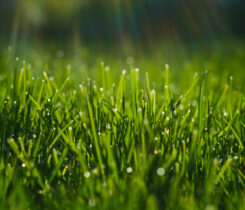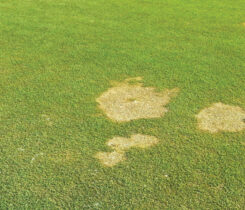USGA Green Section 100th anniversary

Charles V. Piper, Ph.D., and Russell A. Oakley, Ph.D. (Photo courtesy of USGA Green Section)
The USGA Green Section officially turns 100 this month. Golf and other turfgrass sports owe a lot to Charles V. Piper, Ph.D., and Russell A. Oakley, Ph.D., when celebrating the 100th anniversary of the Green Section.
Piper and Oakley were instrumental in the early days of the Green Section. They were among the earliest scientists to conduct studies in turfgrass science and golf course management, and they served as the first chairman and co-chairman of the USGA Green Section.
Piper and Oakley were well-known USDA experts on grasses. In 1906, a golfer named Dr. W.S. Harban went to Piper and Oakley for help with turfgrass problems at his course. Later, golf course architect C.B. MacDonald asked Piper and Oakley for help growing grass at the National Golf Links of America in Southhampton, N.Y. Hugh Wilson also sought their assistance while establishing Merion Golf and Cricket Club in Ardmore, Pa. This need for information led to the 1917 publication of Turf for Golf Courses by Piper and Oakley.
In 1920, Mr. E. J. Marshall of the Inverness Club in Toledo, Ohio, saw a need for help solving turf problems on golf courses. Along with Hugh Wilson and other golf enthusiasts, Marshall’s passion convinced the USGA Executive Committee to establish the Green Section on Nov. 20, 1920. On Feb. 10, 1921, Piper and Oakley published the first issue of The Bulletin of the Green Section.
From the beginning, Piper and Oakley worked with grasses suited for golf courses, and they established the Arlington Turf Garden at the USDA’s Arlington Experiment Farm. This early research location is where the Pentagon is today.
The USGA contributed a large part of the funds for the agronomists pioneering turfgrass research. By the 1930s, 30,000 square feet were at putting green height. Early work was on stolon plantings of creeping, velvet and colonial bentgrass strains. There also were plots of various grasses obtained from different bentgrass seed sources.
Piper and Oakley were men of great character, keen vision and remarkable achievement whose contributions to the improvement in early greenkeeping methods were immeasurable.












